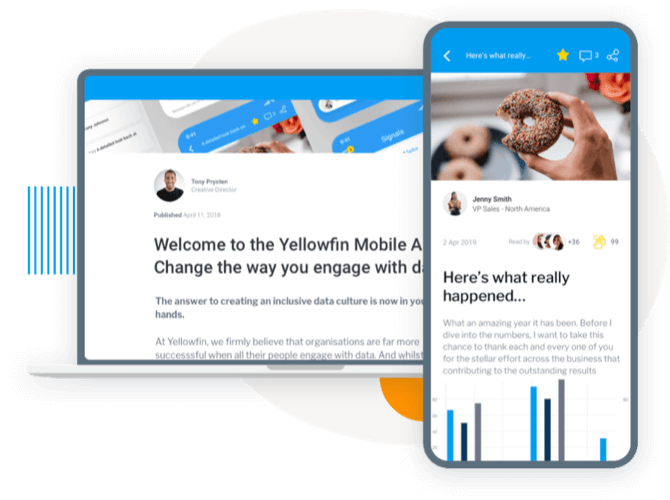
How to create a data culture through data storytelling
Data storytelling is so valuable because it helps provide context that the numbers alone can't give, while helping foster a more data-driven culture for the whole business.
One of the core reasons that organizations invest in analytic solutions today is because they want to get everyone in their organization on the same page. They want everyone to understand what's happening and why it's happening, so that people know what they need to do to be successful and drive outcomes for the organization.
But to do that, they need to know about why it's happening, and looking at a report and some charts on their own doesn't quite convey that deeper level of understanding.
To provide that valuable context, as well as help everyone care about the story behind the results, having some form of data storytelling capability in your analytics is essential.
Traditionally, operational reports and dashboards were considered to be the best way to tell people what was happening, but they just give you numbers. You then have to interpret those numbers to understand what it means in the context of your business, and that can be very complex. Data storytelling is a way to take all of those data points, synthesize them and explain what that data means to your business and why you're acting in a certain way.
This involves building a narrative, which is a skill. To do this well, it’s important to understand a few things about how to tell a story with data.
Organizations tell stories in two ways
There are two types of storytelling in organizations.
First, there are formal or standard reports like management reporting, board and annual reports. These package up what’s happened on a regular basis, whether that’s weekly, monthly or quarterly. This standard reporting starts with data and then you analyze and explain changes in the data to provide context about what’s happening in your business. This helps to build transparency so you can understand what’s happening, why it’s happening and how they can help you be more effective. These reports should be templated so you’re looking at the same data points from one period to another. You can then highlight what you did this period and what changed to drive those metrics.
An important part of standard reporting is reflecting on what’s happened and planning what to do in the next period based on the data you see. The formal process of analyzing your business and taking time out to think about it helps everyone in the organization understand the business better. But the real value in these reports is created when you’re transparent and honest about your business and how you can improve it.
The second type of storytelling is influencing stories. These are best when you want to persuade people to take action and use data to justify their position. Whether they’re in presentations, long-form narratives or informal emails, all organizations have influencing stories, but they don’t often follow a formalized approach that uses data to underpin their arguments. To do this effectively, prepare your influencing story from the ground up. Think about the outcomes you want and then look at the data to support these outcomes. To do this you need to look more broadly. Don’t just look at the data points that support your argument - be bold and brave.
Even if there’s ambiguity, don’t ignore it. There's nothing worse than giving a presentation and having someone point out another data point that completely undermines your credibility. To build a credible argument look at both the pros and cons and use data to take people on the journey with you.
Like any story, it should have a beginning, a middle and an end. At the beginning start with what you want to cover and what outcomes you’re looking for. The middle should include your supporting information including what you’ve looked at or done and what data supports your outcomes. Then in your conclusion, explain what your recommendations are and what the organization needs to do.
Read more: What is data storytelling? The value of context and narrative in BI
Storytelling needs to come from the top down
If you want to cultivate a data culture, you need to role-model data storytelling.
When you're building strategies and taking the organization in a certain direction, take the time to build a story that takes people on that journey with you. Provide them with the data that explains your strategy and let them know what's going to happen and why it's going to happen. By role-modeling, this behavior you empower everyone in your organization to tell you great data stories in return.
It’s also important for you to provide clarity about what kind of formal reports you want to see and what format these should take. Tell the people creating these stories the data you want to see and the actions you want to hear about. You need to guide people for the content that you want to run your business.
At the heart of storytelling is the ability to coalesce an organization around a set of ideas and take them forward using data to support your arguments rather than just opinions. For me, the real benefit I get from storytelling is in taking the time to get my thoughts in order, think about and plan what I’m going to say and how I’m going to say it. The value that process adds is tremendous, which is why we've made Yellowfin Stories and Present such massive components of the overall Yellowfin embedded analytics suite.
People love to read stories, and if you've taken the time to put together a credible story people will read them, be guided and influenced by them and that’s incredibly powerful.
How to use data insights to drive action through data storytelling
Get your quick guide to mastering data storytelling that moves your readers and listeners to action. Emotion and logic should live hand-in-hand. Here’s how to achieve that in business.
